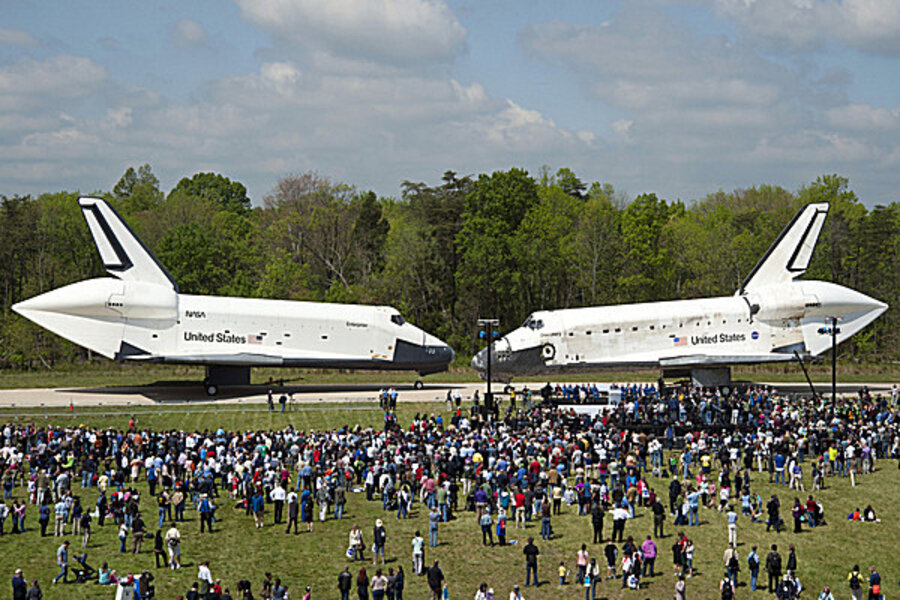Will visitors be allowed on board the Space Shuttle Discovery?
Loading...
| CHANTILLY, Virginia
NASA turned over space shuttle Discovery on Thursday to the Smithsonian Institution, the first in its orbiter fleet to be transferred to a U.S. museum.
The U.S. Marine Drum and Bugle Corps, astronauts including former Sen. John Glenn and several thousand visitors with American flags greeted Discovery. It will retire as an artifact representing the 30-year shuttle program.
The world's most traveled spaceship has been lifted off its Boeing 747 carrier and towed to the museum near Dulles International Airport.
Curator Valerie Neal said Discovery will be displayed as if it just landed, with its large payload bay doors closed. Some of its side panels are worn and discolored, and tiles on its underbelly show streaks from the flames of re-entry to the atmosphere.
The top question museum visitors have been asking is whether they will be able to walk inside Discovery or see the flight deck, Neal said.
"We don't permit that here because we treat all of the aircraft and spacecraft as artifacts, not as exhibit props," she said. Allowing people to walk inside would require cutting a bigger hatch, which would damage it.
Instead, the museum has created 360-degree interactive pictures of Discovery's flight deck and mid deck. Soon there will also be images of the payload bay accessible at kiosks near the Discovery display. That will allow visitors to have a view from the commander's seat and then float through compartments to explore the shuttle. A companion exhibit at the museum on the National Mall will include a model of Discovery's mid deck, where visitors can climb inside and see a shuttle toilet (think vacuum cleaner) and other features.
Discovery flew every type of mission during the 30-year shuttle program. It deployed satellites including Hubble, as well as top secret Defense Department missions in the 1980s with military astronauts on board. It also was the first shuttle to travel to the Russian space station Mir and to dock with the International Space Station.
And because Discovery and other craft in the shuttle fleet were larger than earlier spacecraft, they opened new avenues to space for women and minority candidates in science and engineering who wouldn't have come through military test pilot programs. Neal said that brought "people who were indicative of the rest of us" into space.
The decision to retire the space shuttle fleet was made in 2004, so NASA could spend money to build new spaceships, which are still several years away. The last shuttle flights were in 2011.
NASA Administrator Charles Bolden, who flew aboard Discovery twice, said the space shuttles were a "stepping stone" to explore the rest of the solar system. Discovery's main engines had been retained for testing on a future launch vehicle to take humans to Mars, he said.
Still, some astronauts wished the shuttles hadn't been retired.
Glenn, the first American to orbit the Earth in 1962, said the shuttle extended the nation's quest to explore. But he said the program ended too soon.
"The unfortunate decision 8 1/2 years ago to terminate the shuttle program, in my opinion, prematurely grounded Discovery and delayed our research," Glenn said.
In the museum, the shuttle will be a national symbol of optimism and leadership, Glenn said.
Astronaut Eileen Collins, who was the first woman to pilot a shuttle when she flew Discovery in 1995, said she was sad to see the shuttle retire but proud it had been such a successful program. Now, a young person needs to step up and invent faster ways to explore the universe beyond Earth's orbit, she said.
"We need somebody to invent warp drive for real," she said.







